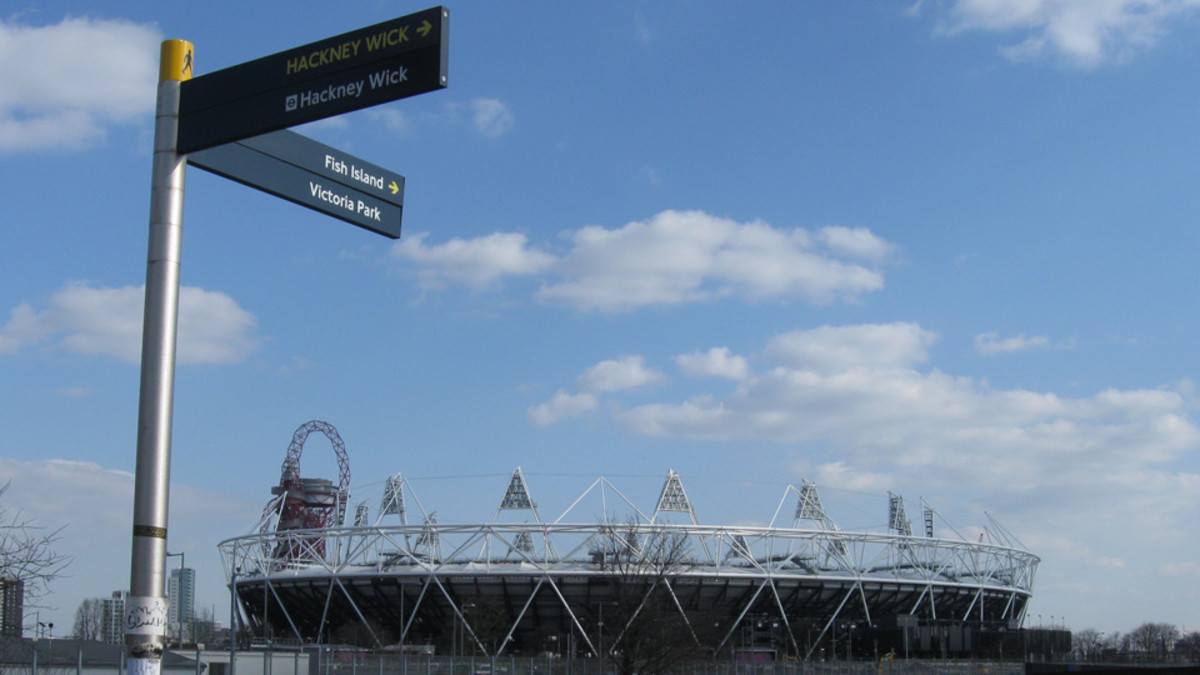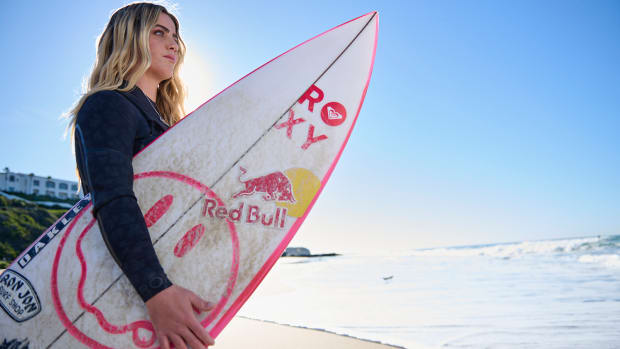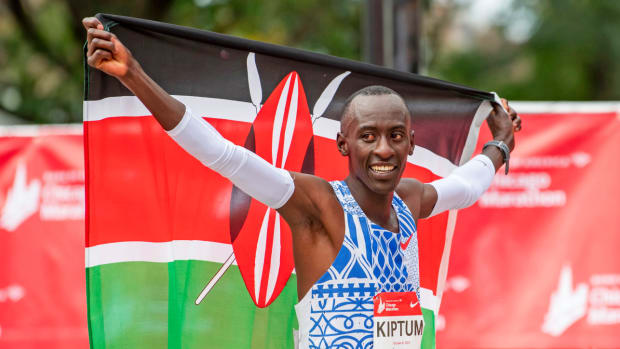Do Olympics fulfill economic promises? A look back at London
LONDON -- When Sochi was awarded this month’s Winter Olympics in 2007, there were celebrations by locals. "We needed this victory,” one resident told reporters. "For the whole country, this is a great resurgence.”
Since then, the Sochi Games have earned scrutiny for other reasons: Russia’s anti-gay laws; skyrocketing costs, which Businessweek reported last month have reached $51 billion, making Sochi the most expensive Olympics ever; and increasing worries the Games will be vulnerable to terrorism.
But the initial reactions pointed to how host countries frame the Olympics today. With a cost in the billions, cities need to deliver more than a three-week spectacle to prove the value of hosting. One solution: The promise of a wide-ranging Olympic legacy that specifically benefits locals. The concept isn’t new, but it has become central to the process.
Check out the Sochi 2014 website: “The Games have long ago ceased being just another sporting event ... The Games bring long-term positive social and economic changes in addition to making it possible to establish new standards and to popularize the Olympic and Paralympic values. This rich legacy -- material and non-material -- remains in the host country for many years, which is why many nations compete for the right to host the Games.”
Can an Olympics deliver this type of legacy? The question is complicated. Talk to people of different political persuasions and you get different interpretations of changes the Games bring and the impact they have on residents. And each Olympics is different.
To explore the subject deeper, it’s worth looking back to London, the host of the most recent Olympic games. The city claimed the most ambitious legacy plans for an Olympics. The key tenant was the regeneration of the area around the Olympic Park, in historically poor east London. Officials promised the changes wouldn’t be for some new, richer set of residents -- they would benefit the people already living there.
At the Cre8 Life Style Centre, located a 10-minute walk from the Olympic Park, employees believe in the ideals underlying London’s legacy. Cre8 is a start-up community center focused on sports, arts and media. As John Herbert, Cre8’s CEO and a former Olympian, said at its Grand Opening last March: “For those of you over the last 12 months who have been wondering, what is legacy 2012? We here at Cre8 -- this is legacy. We are producing legacy.”
In the first year after the Olympics, legacy loomed over Cre8. The experiences of its employees won’t answer the big questions: Did London 2012 fulfill its promises? Can a mega-event spur the development of an area? What is the future of east London? But they point to the question that faced residents immediately: Will the Olympics really help us?
*****
Cre8 is in Hackney Wick, in the borough of Hackney, and many of its staffers have ties to the community. Murad Zeq, the center manager, was born in Jordan but grew up in Hackney and moved back three years ago. Byron Biroli, the head of development, lived here until increasing rents forced him out.
Make the walk to Cre8 from the Hackney Wick train station, and you see an area hanging between a disillusioned past and an uncertain future. Walk down the ramp and turn right. If you turned left, you’d be closer to the Olympic Stadium. The area used to be industrial, home to a peanut company among other things, but the industry started to fade more than a quarter-century ago. Some warehouses were converted to studios, and an active arts community formed. You could walk along the water across from the Olympic Stadium, but for the year after the Games, you can’t get too close. A tall gray metal fence surrounds Olympic Park.
Walk down Wallis Road, past Station Food & Wine. Produce and bottled water are piled under an orange awning. The street curves left and turns into Berkshire Road. Pass side streets like Felstead, where Skinny Eric’s Cycle Works is next to Tubby’s Kebab in a five-store strip. Most of the housing is part of Trowbridge Estate, low-rise, low-cost homes for predominantly low-income residents. The houses are red and brown brick and look worn. Trowbridge originally had seven high-rise tower blocks, but those were demolished in the ‘80s and ‘90s.
You don’t need any research to tell this is a working-class area. The name Hackney was first recorded in 1198 AD. For a long time, this was farmland. In Tudor times, the upper class vacationed here. By Victorian times, in the late 19th century, Hackney was becoming part of the inner city. Factories popped up near the canals. A rising population overtook the land that had once held small villages.
More recently there has been deprivation. A 1978 survey of Hackney residents found 42 percent were dissatisfied or very dissatisfied with their neighborhood -- the highest rate in the country. The same year, an episode of the British TV show Doctor Who referenced Hackney Wick as “just a mud patch in the middle of nowhere.”
In the early 1980s, piles of trash lined the streets and -- according to Paul Harrison’s Inside the Inner City -- people had an “air, not of open despair, but of lack of hope.” Hackney ranked at or near the bottom of the list for pretty much any relevant statistic from the time, including things like unemployment rates or educational achievement. It isn’t surprising to learn that in a 1983 study by the Department of the Environment, Hackney was declared the most deprived place in England.
Then Hackney started to change. The artists moved in. So did the middle class. Attempts were made to improve schools and socioeconomic conditions. Parts of Hackney became trendy, especially for young people. There had always been wealthier areas, but those pockets grew. Longtime Hackney residents think the area needs work, but they’re nearly unanimous in saying it’s better than two or three decades ago. In 2010, the Greater London Authority found that Hackney was still one of the three “English local authorities with the highest levels of income deprivation.”
Keep walking and follow a curve past Gainsborough Community Primary School, guarded by a blue gate. That’s where Zeq went. Finally, after another twist right onto Osbourne Road, Cre8 sits at the end of the road, just across Eastway.
A pale gray brick building houses Cre8. It has an art deco style and resembles the top-half of a plus sign. Two sets of steep stone steps run to narrow blue-gray doors. The building was a set of public baths, and much of the exterior is preserved. The inside is a mishmash of rooms -- the main hall, which resembles a high school gym; an art gallery; a seating area, with couches and high circular tables, for its forthcoming café; and offices, including some vacant ones on the top floor with impressive views of the Olympic Park. The building is constantly evolving as Cre8 tries to make it more welcoming.
Cre8 wants to draw local people and be part of change it knows is coming. At times, Cre8 employees say the London Legacy Development Corporation, the group responsible for delivering on promises to make the area better, isn’t accomplishing anything or is bringing the wrong type of change.
Other times, Cre8 works with the LLDC. Cre8 needs money, and the LLDC is floated as a potential financial backer. Ask one of Cre8’s directors if he thinks the LLDC will write them a check. “Yeah, sooner or later,” he says, “because what we’re doing is sexy.”
*****
During the 2012 Olympics, Cre8 hosted a nightly viewing party. With the Games right down the road, businesses in Hackney Wick and nearby Fish Island expected an onslaught of customers. Some stores planned to stay open 24 hours.
Cre8 had started opening the building to the public and thought the viewing party would draw residents. People were excited about the Olympics. Maybe they would want to watch together. Cre8 teamed with two ex-rowers, and about 300 people came to watch the Opening Ceremony in the main hall. But after that, the turnout wasn’t great. Fifty people came some nights, 10 or 20 people came others.
Cre8 wasn’t alone in failing to draw. Most people attending the Games came in through Stratford -- the main transportation hub of east London, across the Park in Newham -- and were pointed out the same way.
“People were not allowed to look out and see what east London had to offer,” says Lance Forman, owner of H. Forman & Son salmon-smoking plant. “The Olympic Park could frankly have been on a big bubble on the moon. It was an opportunity missed.”
Forman’s great-grandfather founded the business in 1905. Forman had built a new facility in 2003 -- on the spot now occupied by the Olympic Stadium. When London won the bid for the Games in 2005, he had to give up the property as a compulsory purchase (the UK equivalent of eminent domain).
Forman relocated just outside the Park to a spot on Fish Island in Tower Hamlets, where he waged a public battle against Sebastian Coe, a two-time gold medalist in the 1,500-meters and the head of the organizing committee for the Games. Forman fought for four years for better compensation for his land. He was about to cross-examine Coe in court -- the moment he had been waiting for -- when the Olympic Delivery Agency made a settlement offer he accepted. He became a hero for anti-Games activists, especially when he sent Coe a letter after the settlement. “You can run,” it read, “but you can’t hide.”
But then Forman tried to spin the Olympics into a positive. He invested an extra million pounds to add entertainment and hospitality suites to the new venue. He expected them to sell out quickly -- they were about as close as you could get to the Park. People kept telling him he was sitting “on a gold mine.”
Corporations weren’t booking the space, though. He lowered prices, and in the end, it “wasn’t a total car crash.” But he didn’t make nearly what he thought he would. Forman says flyers his business posted were taken down, and he doesn’t understand why. He served Coke, he accepted Visa -- sponsors of the Games. He wasn’t competing. But he felt like an outsider throughout the event.
“They said it would create great business opportunities,” Forman says. “My experience is they failed spectacularly. I do worry about the real legacy of the Games.”
*****
Biroli slips into the back of Cre8’s main hall on a Thursday night in January 2013. He wears a black shirt, jeans with a hole in each knee and brown boots. He surveys the scene. Twenty-five people are there, which is about what he expected.
In October, Cre8 had agreed to become the LLDC’s information hub in Hackney. Tonight, the group has taken over the space for a community meeting on plans for the Park. Gray chairs cover the hardwood floors. The LLDC set pamphlets titled “The 10 Must-Try Experiences” and “Something For Everyone” next to diagrams of the Park. Sandwich platters and fruit trays from Morrisons grocery store fill tables near the doorway. When Biroli enters, David Demolder, the LLDC’s head of licensing, is speaking.
Biroli already could have left for the night -- it’s after 7 p.m. -- but he thought that as Cre8’s head of development, he should attend the meeting. Late nights are normal for Biroli. He works more than 40 hours per week and, like the rest of the staff, is unpaid.
He heard about Cre8 six months earlier from a friend who knew the center needed help fundraising. Biroli had done marketing work for arts organizations before, and he thought he could do some volunteering. He had worked for a bank, too, but he hadn’t loved life in a traditional workplace. He is also a visual artist and a musician. To do his best, he needs freedom. He needs a certain vibe. He didn’t find it in the corporate world, he knew that much. But he feels it at Cre8. He sets his own hours and wears something comfortable to work.
Biroli finds an empty chair in the last row. He doesn’t notice a purse in front of it. His eyes are on Demolder at the front of the room. He listens for details that will affect his work and tries to ignore the PR-speak. A minute later, a thin woman with graying brown hair returns with her third helping of sandwiches. She glares at Biroli. Finally, he looks up. “Did you not see my stuff?” she snaps, shaking her head back and forth. Biroli jumps up and slides two seats to his right. The woman piles the sandwiches into a plastic bag and tucks them into her purse.
Demolder says that this summer, the LLDC wants to begin hosting events in the Park, even before the official re-opening of the northern part on July 27. Part of Demolder’s job is to apply for the licenses needed for these events. In some parts of the Park, the goal will be to create spaces for community events, such as a show with local bands. In other parts, including the northwest lawns, the LLDC will apply to host big concerts. “It’s really, really important that you like what we’re doing,” Demolder said. “If not, it’s in the papers. Then people won’t want to move there because the Park will have a bad reputation.”
Few people are paying attention by this point in the presentation. Some play with their phones. One couple leaves. Biroli squirms in his chair and taps his fingers on his thigh, but he focuses on the front of the room.
He’s not sure how he feels about working with the LLDC. The businessman in him -- the head of development -- thinks it’s going to bring opportunities for Cre8 and the area. But he thinks there’s going to be more gentrification of the area, which means people will be forced out.
He’s been one of them. Biroli used to live in Hackney Wick. He wants to move back, but he can’t afford it. His rent went up about 150 percent over five years, he says. He doesn’t blame the Olympics. The rise in his rent predates any price changes this development will bring. He’s not bitter about it, but he doesn’t think that type of change is best for the area.
In the past, he might have spoken out. He was a “big-time protester.” After the protest against the Iraq War in February 2003, he helped start a record label called Peace Not War. It released CDs of protest songs and raised money for the peace movement. (The label’s website says it distributed more than a quarter of a million CDs in 21 countries). Biroli also got involved in the Occupy protests, but he doesn’t think they accomplished anything. His new plan is to try to work within the system to change things for the better.
When the presenters finish, they open the conversation to questions. Six officials stand at the front of the room, their heads swinging left or right in unison when the moderator -- one of the female officials -- points to the next speaker. A man with shaggy brown hair and a tweed coat hijacks the conversation for a five-minute explanation about community land trusts. A presenter in a black suit clenches his teeth. The officials and some members of the crowd look uncomfortable. They tap their feet, rock back and forth and let their eyes wander around the room.
When the man sits, an official points to Biroli. “As an area, Hackney Wick has been up and coming for a while,” he says. “We’re worried about our small businesses being able to compete.” Businesses expected a boon during the Games, and it didn’t happen, Biroli says. Now, they are worried about the long-term payoff.
Officials reiterate that when the Park opens, it will help bring people to the area. After some back-and-forth, a Legacy official reminds the crowd that the imposing metal fence surrounding the Park will come down. The official moves on to the next question. She doesn’t hear Biroli say, “But there’s a virtual fence.”
Biroli leaves the room a minute later. He sits with Zeq and Patson Ncube, Cre8’s art curator, in the sitting area overlooking the main hall. He’s frustrated. Some of the LLDC’s plans -- building the British Olympic Museum on the south end of the Park, for instance -- seem like a waste to him. He has a better way to spend that money: “Let us use some of it here.” The LLDC and its partners have donated recycled materials for the Arc, an eco-hub going in Cre8’s back lot. Cre8 plans to build and unveil it by July 27, the one-year anniversary of the Opening Ceremony. Otherwise, Cre8 hasn’t received much – just £3,000 to fix its elevator.
Not that it’s easy to take the LLDC's help.
“I get castigated by my friends for taking money from the biggest development agency in the country,” Biroli says. “But the money I’m taking from them is to do work I think has a positive social impact. Yeah?”
*****

The Cre8 Life Style Centre is constantly undergoing changes to try to make it more welcoming.
Courtesy of Cre8 Life Style Centre
Cre8 holds its Grand Opening on a Wednesday morning in March. Zeq stayed until 4 a.m. setting up, and his eyes look bloodshot. The staff cleared out the seating area for Cre8’s still unopened café and squeezed in about 70 people -- a mix of volunteers, local officials and children from two nearby schools.
The guest of honor is Jonathan Edwards, the world-record holder in the triple jump and a gold medalist at the Sydney Olympics in 2000. Edwards has short gray hair and wears a charcoal gray suit. In 2005, he was part of the team that bid to host the 2012 Olympics. He tells the crowd at Cre8 about waiting for the result in a Singapore hotel room with Coe, the head of the bid team.
“We all said we’d swap our medals and our records for the right result the following day ... It’s because of the impact we believed it would have across the UK but particularly in the East End of London. The thing was, all of us people in the room, really, we could talk about legacy, but we probably weren’t going to be the ones who made it happen … So I just want to, as part of that original team, pay a vote of thanks and respect to you for what you have achieved here.”
*****
Zeq steps outside to smoke on a rainy Saturday in April. He stands under the ledge, but beads of water drip onto the top of his shaved head.
As center manager, Zeq oversees Cre8’s finances. The money flow has not been what he expected. “We’ve got the ‘Wow’ factor,” he tells you. “People come in here and say they want to help. But it’s all just talk.” He takes a puff of his cigarette. “Nothing till it’s on paper.”
Overhead is high: about £12,000 per month, including rent and utilities. Employees still aren’t paid. Businesses have talked about contributing. One told Zeq it would help pay for repairs around the building. He got estimates for five fixes and sent them to the company, but nothing has come of it.
The LLDC hasn’t helped much, even though they “say they love what we’re doing.” The group’s predecessor LOCOG, which organized the Games, donated leftover computer equipment and office supplies. But cash has been in short supply. “I mean, it’s fine,” Zeq says as he throws down his cigarette.
People want their names associated with Cre8 because it looks good to support something in east London these days. They don’t want to fully commit. “Nobody wants to give you money,” he says. “They like it and wanna support it but not give money. We don’t have that kind of luck. Maybe one day.”
*****
Read the text on the front of Cre8’s website: Cre8 Life Style Centre is a landmark London 2012 regeneration project which is committed to changing the lives of all the people it supports and works with through training, learning, personal development and cultural experiences.
Then talk to the person who wrote it. “What is ‘legacy?’” says Susann Jerry, a communications consultant who works with Cre8. “Everybody talks about legacy. I don’t think most people know what it is. Or how to deliver it.”
Look in the “Something For Everyone” pamphlets the LLDC hands out at meetings, and Cre8 is listed as one of the attractions around the Park. Cre8 staffers are sometimes happy to draw the connection. It’s coincidental, they say, but Cre8 and the LLDC have similar goals. “This fits in really, really well with the Olympic legacy,” Biroli says. “One hundred percent.”
Since the Games ended, after what was widely praised as a well-run operation, the LLDC has taken charge. Its job has many aspects, including transitioning the Park from elite athletic venue to community space, bringing business into buildings like the Broadcast Centre, overseeing construction of five new neighborhoods around the Park, communicating plans to residents, being fiscally responsible and aligning with central government policies. (Boris Johnson, mayor of London, is LLDC chairman).
Essentially, it is responsible for using the Olympics as a catalyst to make east London a better place for the next generation. Paul Brickell, the LLDC’s executive director of regeneration and community partnerships, says the organization is focused on engaging with communities and businesses located near the Park. They offered free bus tours of the Park in Progress and plan to offer residents free or discounted tickets to many of the re-opening activities. They don’t have much money for grant funding, but they have their own projects throughout the area. They want to reattach the Park to the larger community.
But critics often say that although east London needs help, the Olympics weren’t the answer. The Games, they say, can’t create the type of change the area needs -- that Brickell and the LLDC may be hardworking and well intentioned, but they have an impossible task.
Is a successful regeneration possible?
“I think it’s possible, but ... " says Gavin Poynter, trailing off.
Poynter is a professor at the University of East London, which has a campus close to the Park. He is the chair of the London East Research Institute’s board, and, not surprisingly, the Olympics have shaped its recent work.
Poynter has studied many aspects of the Games, including the impact of Olympics on past host cities. In 2009, he co-wrote a paper on London’s legacy plans. “London 2012’s commitment to social transformation in East London exceeds the ambitions of past host cities,” it reads. But the authors don’t seem confident in the promised social outcomes. They wrote that there is “a risk that the Park and the development of its surrounding area, will rely heavily upon securing private investment that may privilege commercial interests and marginalize social gain.”
Poynter is kind and self-effacing and sounds like a professor. He references studies from memory. He often starts answers with “One could argue ... ,” and even when he makes strong points, he’s quick to finish with a counterargument, lest you think he doesn’t see both sides. Here, he’s more definitive. “It’s probably not for us to judge, but I think that we were right,” he says.
He credits the LLDC for its work. If you look at the physical legacy -- the added transportation links to east London, the transformation of the Park from its Games-time status -- he thinks there are positive signs. But …
“If these events are going to stimulate something other than rising land prices, rising house values, then I think the state has to commit itself to a long-term investment and social improvement plan,” he says. “I don’t think it’s happening to the extent that it would have to.
“The social agenda that was set and the promises made by government have been partially fulfilled in some areas, but in others, they remain to be achieved. And are unlikely to be achieved.”
*****
Zeq and Biroli are in the alley beside Cre8 on a sunny day in late April. The Arc project is running behind schedule. The alley is about half covered with wood planking, but the back lot itself is still just dirt, and construction on the Arc building hasn’t started. “It’s just taken a lot longer than it should have,” Zeq says. “We thought we could do this whole project on a voluntary basis. But volunteers, they turn up one day and then they don’t turn up, and there’s nothing you can do.”
The toughest thing about the delays is that it will cost them money. They will pay for the labor of one worker to lead the completion of the first phase -- getting down the wood from the temporary McDonald’s in the Olympic Park and getting up the hanging gardens that will go along the alley walls. They think they can finish the phase in about three weeks.
“Coming out of our budget to get this phase done,” Zeq says.
“Three weeks worth of wages,” Biroli says.
“No kidding. I’ve got to find money for another three weeks. But it is our job regardless of why.”
“Exactly.”
“We got to get it done. It always comes back to us.”
“Exactly,” Biroli says. “We’re putting our hands out for a lot of things as it is. A lot of things. Actually, except for a few bits and bobs here and there, we haven’t paid out much in cash. But that’s the whole point -- we can’t do it. We can’t afford to do it.”
They’re grateful they haven’t received pressure from groups like the LLDC for running behind. As Biroli puts it, “The LLDC, they made us do a funding application that we’ve got to stick to f---ing point by point by point. No deviation. If you deviate, you’re f---ed.”
Nearly two months later, you’ll be in the back lot with Martin Krupik, another member of the Cre8 team. The alley along the side will be mostly covered with planks by then, and some of the planters along the walls will have flowers in them. The majority of the lot will still be just dirt, and construction on the Arc still won’t have started.
*****
On a Thursday night in June, the LLDC is hosting another meeting to update residents about the Park. As you walk past Felstead Street, where Skinny Eric’s and Tubby’s are side-by-side, you meet Biroli. He’s not staying for the meeting.
“Nope, I’m finally getting out of here early tonight,” he says.
Only 11 residents attend, and no Cre8 staffers. The people who show up are ones unhappy with the process. They are worried about things like the crowds and noise from the Yahoo! Wireless Festival (with Jay Z and Justin Timberlake headlining) and other concerts being held on the Park in July. Clive Little, the LLDC’s director of events and programming, fields these questions. He’s in black jeans, a white t-shirt and a black blazer. He is balding with a beard and black frame glasses.
At one point, he begins a slow build. He articulates each word. “What if I told you that this would have a huge impact, that it would bring £12 million to the local area?”
Three members of the crowd respond.
“I’d question that.”
“Locals don’t see any of it.”
“It’s gonna be hell.”
*****
Today was supposed to be a celebration. It’s July 27, the one-year anniversary of the Olympics. But the Arc is unfinished and the back lot has been rented out. The event Cre8 is pushing today is the official opening of its café.
Zeq stands alone behind the counter checking the schedule for next week. Only a few customers have stopped, but Cre8 wants to be prepared. Each staffer will take shifts at the café. They did barista training earlier in the week. It’s still a work in progress. One of Cre8’s directors wasn’t sure how to make a latte when two policemen came by. A few people walk through to the toilets or to see the photo studio upstairs, but no one stops by Zeq.
The café has five circular tables. Three have copies of The Wick newspaper, which publishes news and old photos of the area. The issue features a shot of a red double-decker bus from 1967. More reading material sits on a bookshelf in the corner. Zeq brought in some thrillers, and someone donated computer-coding books. Tucked away on the middle shelf are three books about the Olympics.
Cre8 has rented out its main hall to a pop-up bar for the next few months, and it gets more traffic today. Zeq says the money from the events company will be enough to pay next year’s rent. It has taken some of the pressure off, but programs like Cre8’s media classes haven’t started yet.
“To be honest, I thought by this point we’d be further along,” Zeq says. “It makes me think sometimes.”
He is leaving for vacation tomorrow. He jokes that he’ll never come back to Cre8. “I’ll get a good job with a good salary,” he says. A few months later, he will leave for a paying job. Richard Gyesie, one of Cre8’s directors, will say the lack of funding is causing Cre8 to lose good people. They need sponsors or investors to help out.
But tonight, Zeq continues to work. He decides to close the café two hours early tonight -- “No point in being open,” he says -- but he’s not leaving yet. He checks the schedule once more and takes two visitors on a tour. Zeq has done this often over the past few months, and you’ve accompanied him a handful of times. The tours all go roughly the same. Cre8 is still under development, and when Zeq reaches something unfinished, he uses his hands, as if pulling back a screen so you can see what he sees. There will be a professional greenscreen here, he says, moving his right hand from his left. Over there in the corner, we’ll have professional lighting equipment.
As he weaves across each floor, he sprinkles in teasers -- Remind me to tell you about the man with the little dog. (He’s a hairstylist renting an office on the second floor). Most of the buildup is for the view from the top floor, where the tour ends. There are offices and a door out onto Cre8’s roof. From there, looking straight out, is the Olympic Stadium.
Months ago, the Stadium dominated the sky. The estate housing and studios in between got overlooked. Today is one of the busiest days at the Park since the Olympics ended. The Anniversary Games are there. The Open East festival is kicking off the opening of the northern part of the Park. Looking out, the rest of the area still goes unnoticed. But the Stadium seems smaller.
Bill Carey reported in London with funding from the US-UK Fulbright Commission.








